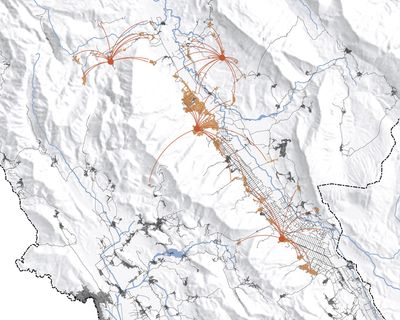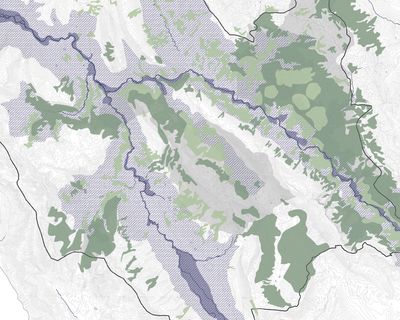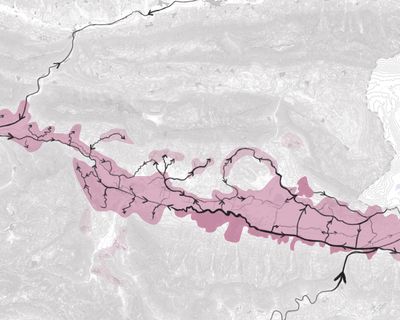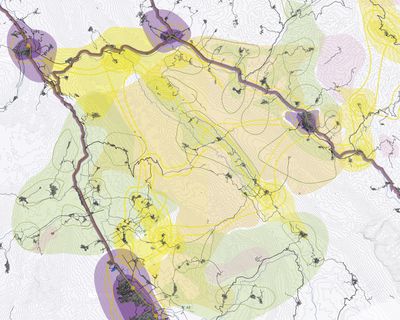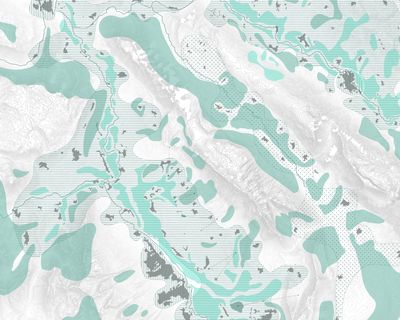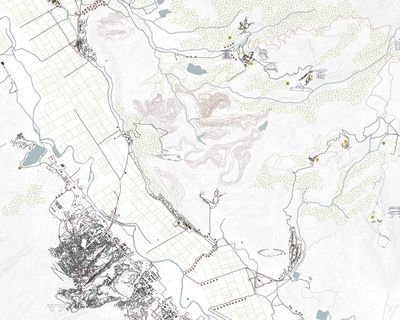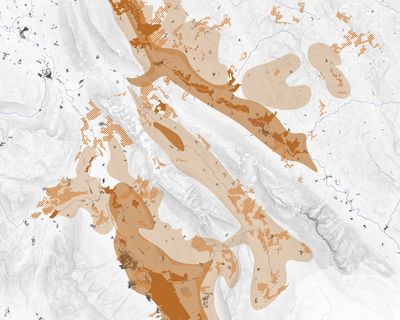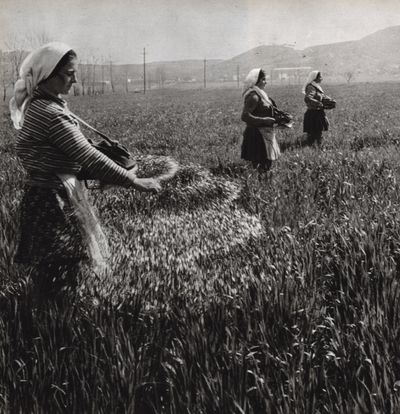Albania
Project on the Countryside

When it was first exhibited in 1972, Edi Hila’s Planting of Trees was praised by his colleagues in the Writers’ and Artists’ Union. However, the playful exuberance of the painting was too heterodox for the communist regime. A year later, Planting of Trees—initially conceived as a metaphor for planting a progressive future for Albania—was denounced for disregarding the principles of Socialist Realism and Albanian Socialism. Hila was sent to a labour camp for three years and Planting of Trees was condemned to be locked in a dark room for nearly half a century.
Edi Hila’s painting represents both Albania’s paranoid past and the exciting momentum of progressive socialism. Today we can appreciate it anew and use it as a lens through which to look at the Albanian countryside and its future. What is the meaning of Hila’s perspective on planting trees in the context of a contemporary European territory and society? What will be the future of Albanian, and of European countryside? And could we, through a project on that countryside, also address urgent challenges for Europe—inequality, migration and ecological crisis?
Albania is still one of the least explored countries in Europe, yet its idiosyncratic wilderness and its cultural past have much to tell. Albania’s recent history has been characterised by radical territorial and structural transformations. The country’s past is marked by almost forty-five years (1946–1990) of extreme isolation under the socialist dictator Enver Hoxha. Self-sufficiency, the building of socialist villages and the education of the rural society were at the centre of Hoxha’s programme. Since the end of communism in the early 1990s, Albania has embarked on a delirious rush towards the open-market economy which has reversed the urban-rural relationships. Surprisingly, agriculture still remains its main economy.
Southwestern Albania portrays multiple transformations occurring today across the Albanian countryside. It is a slow territory, now exposed to fast paced change. It is a palimpsest, where industrial and self-sufficient agriculture co-exist, and mass coastal tourism and mountainous eco-tourism are both booming. Despite these currents, the future of Albania’s countryside and its villages remain open. Our investigation will set out from the following questions: What can we learn from Albania’s mountainous countryside? How do we envision its future? Can our project be both social and ecological? Can we design new ways of living and working in the countryside?
During the semester we will take an investigative journey to Albania. We will be working on and travelling through the slow countryside of Përmet’s mountains, the tidal villages of Zagoria, the agricultural heritage of Drino river valley, the UNESCO city of Gjirokastër, the olive and tangerine orchards of the Ionian coast. The aim of the journey is to explore this cultural landscape and to prepare the basis for our studio work in Zurich.
Throughout the course we will deploy a range of performative research and design methods, including investigative walks, cartography, photography, and model building. All of the study sites require individual handling, fresh insights and careful approaches, but each student’s work will form a crucial contribution to a common vision. Together we will rethink the role of architects for the European territory.
This studio is the fourth semester in the series of European Countryside carried out by Architecture of Territory. Each studio represents a collective project, where individual students work together towards building a vision for the countryside. This semester focused on the South Western region of Albania.
